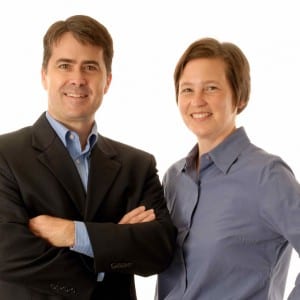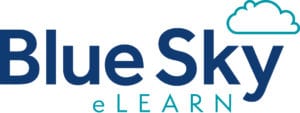We continue our tradition of providing After Action Reviews for the events we host, but with a slight twist this time. The scheduled live programming has ended, but we don’t consider the Learning • Technology • Design™ (LTD) experience to be over yet, so we are calling this a “Mid-Action” review.
In this episode of the Leading Learning podcast, Celisa and Jeff reflect on what they set out to do with this year’s version of their annual virtual conference, and how it is turning out.
To tune in, just click below. To make sure you catch all of the future episodes, be sure to subscribe by RSS or on iTunes. And, if you like the podcast, be sure to give it a tweet!
Listen to the Show
Read the Show Notes
[00:18] – A preview of what will be covered in this podcast where Celisa and Jeff perform a “mid-action” review of Learning • Technology • Design™ (LTD) 2018, the annual virtual conference they hosted over the month of February.
[00:50] – Thank you to Blue Sky eLearn, sponsor of the Leading Learning podcast for the first quarter of 2018. Blue Sky is the maker of the Path learning management system, an award-winning, cloud-based learning solution that empowers your organization to maximize its message. Blue Sky also provides a range of virtual event and instructional services to help you maximize your content and create deeper engagement with your audience. To find out more about Blue Sky eLearn and everything it offers, visit https://www.blueskyelearn.com.
[01:25] – Highlighted Resources of the Week –
- Past After Action Reviews of previous Leading Learning events:
- AAR of Learning • Technology • Design™ 2017 – Episode 73
- AAR of Learning • Technology • Design™ 2016 – Part I – Episode 35
- AAR of Learning • Technology • Design™ 2016 – Part II – Episode 36
- AAR of the Leading Learning Symposium™, Part I – Episode 13
- AAR of the Leading Learning Symposium™, Part II – Episode 14
- Past virtual conference episodes:
What is an After Action Review (AAR)?
[02:11] – The four components of an AAR include:
- What did we set out to do?
- What actually happened?
- Why is there a difference between the first two (if there is one)?
- What should we continue and what should we change?
It’s noted this was popularized by David Garvin, who wrote about it as a practice used by the U.S. Army. We encourage it as a practice for organizations that produce educational offerings of any sort. It is also something we recommend for individual lifelong learners – see https://www.missiontolearn.com/after-action-review/ to learn more.
Also, while we’re following the AAR framework, this is actually a “Mid Action Review” because, while the live online sessions for LTD 2018 are done, we’re not done. But this is a valid, valuable point for reflection.
What We Set Out To Do
[04:28] – Our goals (similar to past years):
- To continue to raise awareness of the learning business as a profession.
- To have an emphasis on high performance and excellence.
- To walk the walk.
- To be financially viable.
- To see how all of this evolves and what kind of community continues to develop around this and the topics that emerge.
[06:21] – What was different this year:
- Moved from a place-based event (2016) to a three-day virtual conference (2017), to an extended virtual event this year over the month of February – this allowed the use of forums and more emphasis on the experience as a key part of the learning opportunity.
- Single track this year vs. concurrent sessions (as done last year) – allowed for a shared experience.
- Experimented with lengths/formats –
- Longer workshops this year – 90 min
- Content Pods™
- Follow-Up Fridays
- Collaborative Coaching™
- Points and badging in the online community
- Boosting
[10:23] –
- No sponsors or exhibitors – really focused on the learning experience – so vendors were welcome to register.
- Focused on giving people the experience and the “experience of the experience” – so even if the content wasn’t particularly relevant, perhaps the format or approach was.
What Actually Happened
[12:40] –
- Use of online hub with discussion forums – got some positive feedback, though clearly a downside for others.
- Not a large percentage who attended live so many are clearly relying on recordings.
[14:19] –
- As far as formats, Content Pods™ on Tuesdays didn’t necessarily have higher live attendance than longer workshops on Thursdays but they were a good opportunity for special guests and registrant-driven topics.
- Follow up Friday’s worked very well – one of Jeff’s most enjoyable parts of the event.
- Points and badging were kind of ad hoc and worth trying, but not a big impact.
- Boosting – TBD
- Relatively few vendors registered. Some past exhibitors did attend and some contributed actively.
Difference Between the Two
[17:24] – At a high level, we did achieve the big goals we set out with regarding an extended learning community, good learning practices, etc. Some points to consider:
- There was certainly a group going through LTD that represented a great learning community but we’d had liked to see a higher number of people participating like this.
- The extended format showed a lot of potential. It’s unclear if we can expect the percentages to go up in the future – do we just have to have larger registration numbers (so same percentage of engaged users, but bigger number) or is a culture shift possible?
- For the live sessions, would have hoped fewer tracks, single tracked might have helped this.
What Should We Continue and What Should We Change?
[21:43] –
- Extended format – we’d like to continue with this because there is a lot of potential for supporting effective learning (ability for spaced practice, retrieval, and interleaving). Need to look at how we approach scheduling the sessions and evaluate the amount of time we ask for in a given day.
- When it comes to badging, points, and boosting, we’d like to keep, but plan ahead of time on how to use them and measure impact.
- Would like to cut the tie to the clock—so may be better to have a start time and no official end time with the content and interaction determining the length rather than starting with length.
[25:23] –
- With Content Pods™, may be better to do these as pre-recorded, flipped content – to use as seed for live discussion/Q&A – or maybe these are part of the basis for Follow Up Fridays.
- Need to rethink what we do with exhibitors and sponsors.
- Better communicate the value of attending live and deliver even more on the “workshop” component of it.
[29:15] – With After Action Reviews – and in this case, the Mid Action Review – we always do them before looking at evaluations in order to bring our own perspectives first. We want to “walk the walk” and part of that is being transparent about what we’re doing and why. If you’re considering a virtual event of any sort, we encourage you to comment and/or ask questions on this post below. You can also email us at ltd@tagoras.com if you have any questions.
[30:28] – Wrap Up
If you are getting value from the Leading Learning podcast, be sure to subscribe by RSS or on iTunes. We’d also appreciate if you give us a rating on iTunes by going to https://www.leadinglearning.com/itunes.
We’d also be grateful if you would take a minute to visit our sponsor for this quarter, Blue Sky eLearn. In addition to finding out about their services, you will also find a variety of great resources that they offer for free.
Also, consider telling others about the podcast. Go to https://www.leadinglearning.com/share to share information about the podcast via Twitter, or send out a message on another channel of your choosing with a link to https://www.leadinglearning.com/podcast.
[33:18] – Sign off




Leave a Reply